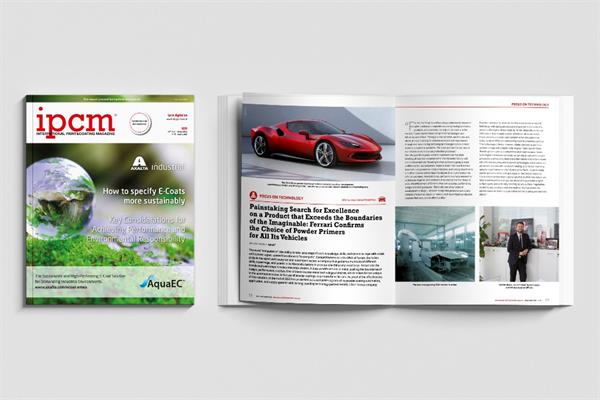
Read the latest issue of the magazine dedicated to surface treatments and organic and inorganic finishes: special edition on automotive & transport!
The language of our age is pervaded by the use of the prefix “e-”. E-mobility, e-economy, e-vehicles, e-commerce, e-fuel, e-learning, e-mail, e-bike, and e-coat are just a few examples of the use of this prefix, which, however, does not have an unambiguous meaning.
Originally, “e-” was merely a contraction of “electronic” to create modern compound words relating to communication via telematic networks or, more generally, anything that is digitally mediated. We are living in the era of the e-economy, characterised by the extensive use of the Internet and information technology, which has revolutionised the technological and organisational structures of companies but also their approach to products, introducing concepts such as the holistic view of a product and its life cycle or the value generated by a business’ network and general ecosystem.
In recent years, however, “e-” has also emerged as a contraction of “electric” and by extension of meaning “ecological”, since everything electric is considered sustainable and efficient. The vehicles of the future thus become e-vehicles thanks to electric propulsion; liquid or gaseous fuels of synthetic origin become e-fuels because they are produced by energy-intensive processes that however are powered by electricity; human mobility becomes e-mobility if it entails the use of electric means of transport (cars, bicycles, buses...).
Why am I making this reflection at the opening of this ipcm® issue? Because what you are reading is the Editor’s letter of one of the most eagerly awaited issues of the year, as well as our record issue in terms of advertising sales since 2010 (and for this achievement I would like to thank all the international companies that believe in our publishing project): the annual “automotive & transport” special that places finishing and surface treatment technologies in the broader context of the industry of cars and their components in particular and of transport vehicles in general, a sector that sets the pace for the entire industry, experiments, constantly challenges itself, and is also a source of dreams for so many of us. The result is a set of technological, operational, and management trends that are then transposed, interpreted, and adopted by the industry at large.
Well, in the articles that make up the “automotive & transport” special insert of this issue of ipcm®, which is also accompanied by the ICT insert on surface cleaning and preparation technologies, you will find the prefix “e-ˮ repeated very frequently. Electricity supply has been the biggest topic of debate within the automotive industry for some years now, and with increasing urgency, not least in view of the 2035 deadline for the EU-dictated ban on petrol and diesel for all new vehicles.
The subject of electric mobility has driven R&D in the field of vehicle propulsion and generated new industrial and manufacturing needs (let us just think of the production of battery modules, motors, and in general all the electric components of a vehicle). It has even been identified with some precise colours, such as acid green and electric blue, generating a cascading effect on the entire finishing sector.
You will find much of this in the next several pages, starting with a report on a major car manufacturer, Ferrari, which shared with ipcm®’s readers its technological choices in terms of finishing, electric mobility, and related infrastructure investments.
And that is not all because, as in every issue, ipcm® goes beyond the contents of its special insert to reveal much more about technological innovation in numerous manufacturing sectors and present scientific and technical research on different coatings and their application.
READ THE MAGAZINE!